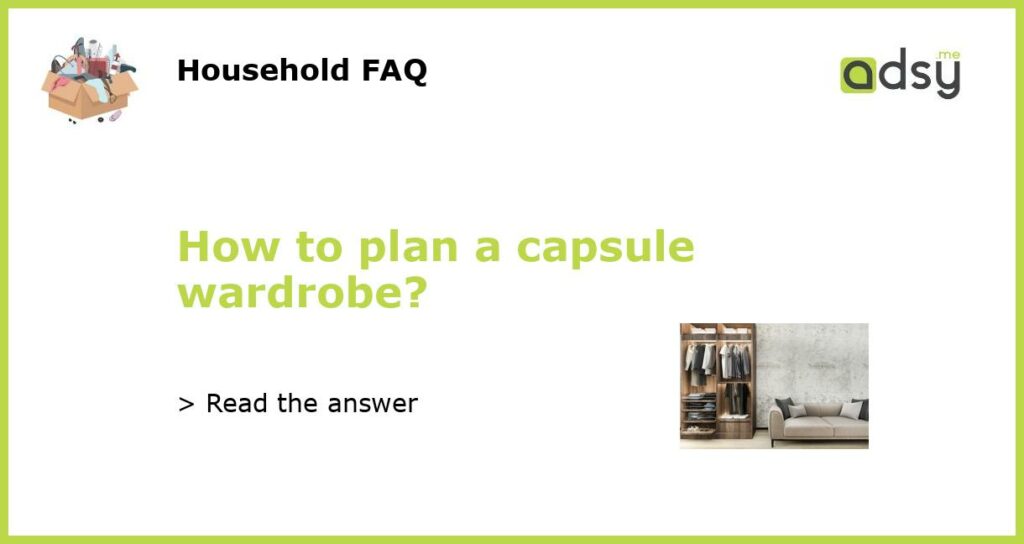Understanding the concept of a capsule wardrobe
A capsule wardrobe is a compact collection of versatile clothing items that can be mixed and matched to create multiple outfits. The concept was popularized by fashion designer Susie Faux in the 1970s and gained renewed attention in recent years with the rise of minimalist fashion and sustainable living.
Assess your personal style and lifestyle
The first step in planning a capsule wardrobe is to assess your personal style and lifestyle. Consider the activities you engage in regularly, such as work, social events, or hobbies. Think about the colors, patterns, and silhouettes you feel most comfortable and confident in. Identifying your personal style will help you make informed decisions when selecting the items for your capsule wardrobe.
Declutter your current wardrobe
Before building a capsule wardrobe, it is essential to declutter your existing wardrobe. Take inventory of your clothes, shoes, and accessories, and assess each item’s fit, condition, and relevance to your personal style. Donate or sell items that no longer serve you and create space for the new pieces that will make up your capsule wardrobe.
Plan your capsule wardrobe by setting a color palette and selecting versatile pieces
Setting a color palette is crucial in planning a capsule wardrobe. Choose a few neutral colors that complement each other and add a few accent colors to introduce variety and personal flair. Neutrals like black, white, gray, and beige are timeless and versatile; they can be easily mixed and matched. Selecting versatile pieces is also essential. Look for items that can be dressed up or down, layered, and worn in various combinations to maximize their potential.
Invest in quality and sustainable pieces
When building a capsule wardrobe, it is essential to invest in quality and sustainable pieces. Opt for items made from natural and durable fabrics that will stand the test of time. Consider the ethical and environmental impact of the brands you support and choose responsible options. Investing in well-made pieces may initially cost more, but they will last longer and save you money in the long run.






